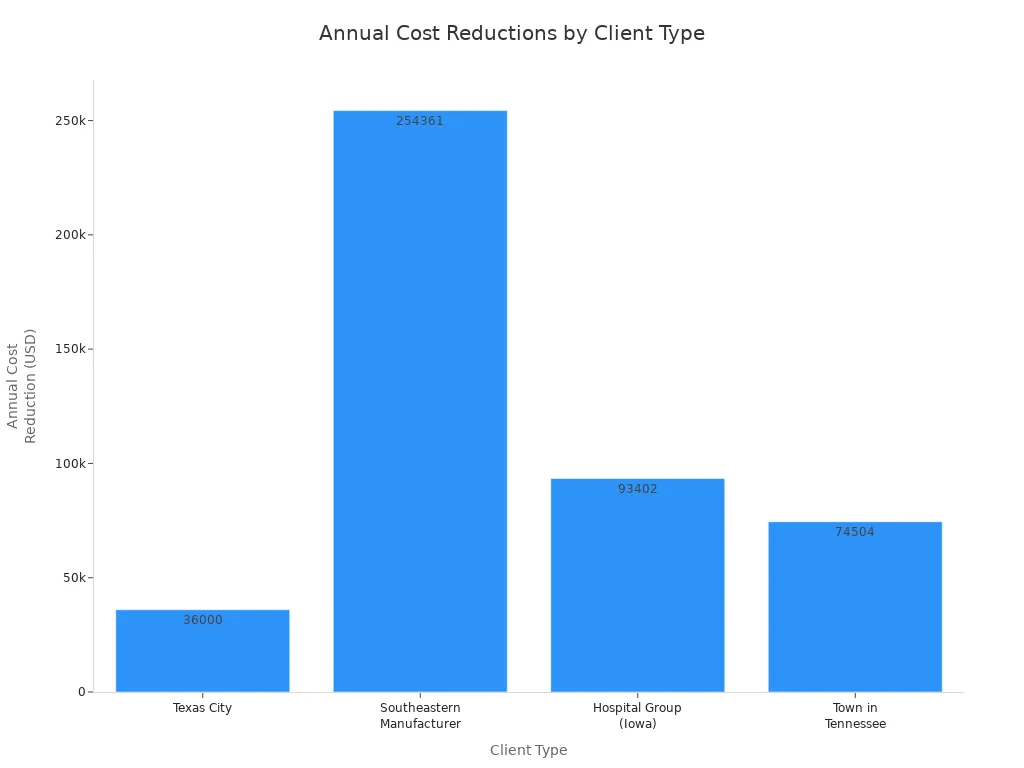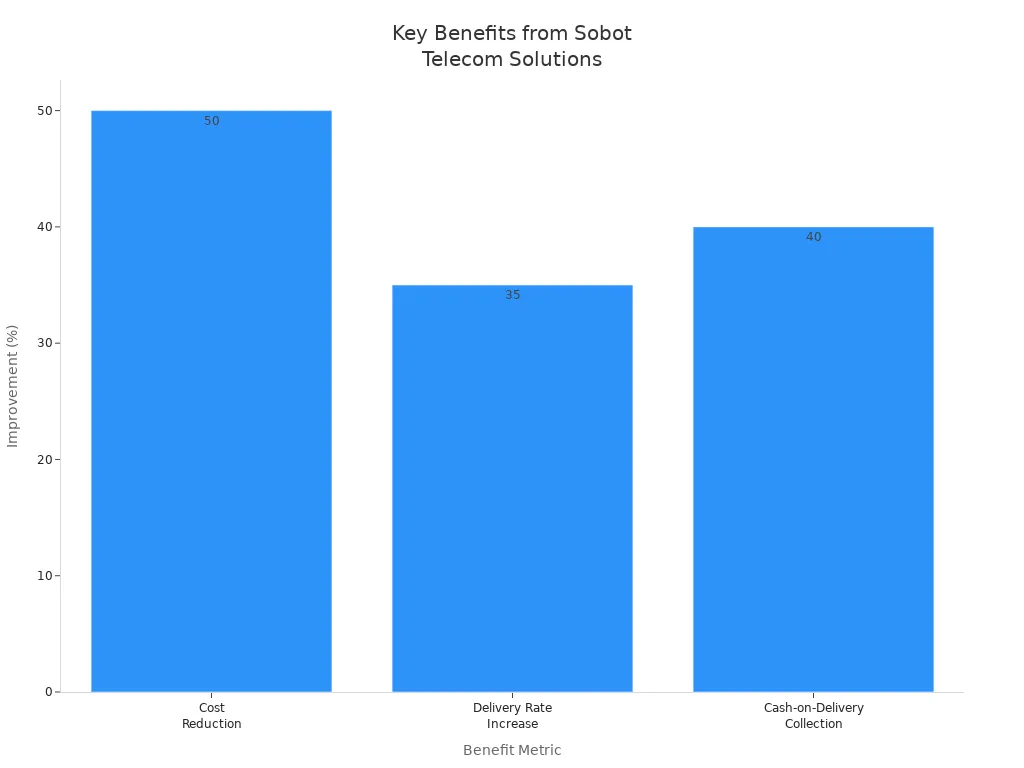Benefits of Telecommunication Key Advantages and Drawbacks

Telecommunication shapes business communication today. In 2025, nearly 5 billion people use mobile internet, and the industry supports about 19 million jobs worldwide. Companies rely on tools like Sobot AI and Sobot call center to deliver seamless customer experiences. Telecommunication brings many benefits of telecommunication, such as faster service and better connections. Sobot helps businesses unlock these advantages with modern, omnichannel solutions that keep pace with digital change.
| Metric | Statistic | Description |
|---|---|---|
| Mobile internet users (2025) | Just under 5B | Adoption continues to grow globally |
| Jobs supported by mobile sector | Around 19 million | Shows employment impact of telecommunication technologies |
Telecommunication in 2025

Industry Trends
Telecommunication in 2025 shows rapid change. Companies use voip to connect teams and customers worldwide. The industry focuses on security, automation, and better connectivity. The table below highlights the top trends shaping the sector:
| Trend | Description & Impact |
|---|---|
| Cybersecurity | AI-driven attacks increase risk. Telecoms adopt SASE, SD-WAN, and managed security solutions bundled with existing products. |
| Self-Service Customer Experience | AI and automation enable customers to self-procure telecom services, reducing sales cycle complexity. |
| Rural Connectivity | 5G and LEO satellites provide reliable, high-performance internet to rural areas, unlocking new customer bases. |
| 5G Dominance and 6G Emergence | 5G rollout continues with higher adoption and monetization. 6G development is underway, promising ultra-high speeds. |
| Industry Consolidation | Mergers and partnerships create innovation and growth opportunities. |
Voip systems play a key role in these trends. Companies rely on voip for flexible, cost-effective communication. The rise of 5G and the start of 6G networks support new uses for voip, such as virtual reality meetings and smart devices. AI in telecom helps manage networks and detect threats. Sustainability also matters, with telecoms reducing e-waste and improving energy use. Satellite and hyperscaler partnerships expand voip access to remote areas, making business communication more inclusive.
Customer Service Evolution
Customer service in 2025 looks very different from the past. Voip systems now support AI-powered chatbots and virtual assistants. These tools answer routine questions instantly and work all day, every day. Human agents focus on complex problems that need empathy and critical thinking. Omnichannel platforms bring together phone, email, social media, and chat in one place. This setup makes customer interactions faster and smoother.
Personalization has become a standard. Companies use customer data to tailor support and recommendations. Studies show that 71% of customers expect personalized experiences, and 76% feel frustrated when they do not get them. Voip helps companies meet these expectations by connecting all channels and storing customer information securely. Expanded connectivity, especially through LEO satellites, allows customer service to reach remote and underserved areas. Mobile devices can now connect directly to satellites for texting and emergency help, making voip systems even more reliable.
Sobot’s Role
Sobot stands out in the telecommunication sector. The company leads in intelligent outbound robots, which support customer service and outbound calling. Sobot holds a strong market share, especially in China, where the telecom industry is large and growing. The company’s solutions use advanced technologies like natural language processing and speech recognition. These features make voip systems smarter and more human-like.
Sobot’s products, such as the Cloud Call Center, offer automated dialing, personalized messaging, call recording, and data analytics. Integration with CRM systems helps businesses manage customer engagement more efficiently. Sobot’s focus on security, high uptime, and global reach supports companies in many industries. The need for cost optimization and efficient outbound calls makes Sobot a trusted partner for business communication. Sobot’s commitment to innovation ensures that its voip solutions keep pace with industry trends and customer needs.
Benefits of Telecommunication
Telecommunication brings many advantages to businesses and individuals in 2025. The benefits of telecommunication reach across cost, flexibility, scalability, and advanced features. Companies like Sobot help organizations unlock these benefits with modern voip systems and omnichannel solutions. This section explores the main advantages that telecommunication offers today.
Cost Savings
One of the most important benefits of telecommunication is cost savings. Businesses can reduce expenses by using voip and cloud-based systems instead of traditional phone lines. These solutions lower hardware costs and cut down on maintenance. Companies also save money by automating customer support and using self-service portals.
The following table shows how telecommunication technologies help reduce operational costs and improve efficiency:
| Metric | Before Implementation | After Implementation |
|---|---|---|
| Customer support ticket volume | 1000 | 500 |
| Average response time | 24 hours | 12 hours |
This data shows a 50% drop in support ticket volume and a 50% decrease in response time after adopting self-service portals. These improvements lead to significant cost savings for businesses.
Many organizations have seen large reductions in yearly expenses by reviewing and optimizing their telecom services. The table below highlights real-world examples:
| Client Type | Cost Reduction Achieved | Percentage Savings | Key Actions Taken |
|---|---|---|---|
| Texas City | $36,000 annually | Over 20% | Telecom audit, contract renegotiation, short-term contract with upgrade clauses |
| Southeastern Manufacturer | $254,361 annually | 21.6% | Infrastructure reconciliation, elimination of antiquated services, vendor coordination |
| Hospital Group (Iowa) | $93,402 annually | 71.3% | Inventory build, service optimization, removal of unnecessary components |
| Town in Tennessee | $74,504 annually | 34.9% | Complete service review, inventory, vendor negotiations |
| General Client (Inventory Management) | Reduced number of services and accounts | N/A | Telecom inventory portfolio, service management improvements |

These examples show that the benefits of telecommunication go beyond simple communication. They help organizations save money, improve efficiency, and focus resources on growth.
Flexibility and Remote Work
Telecommunication gives employees and businesses more flexibility. With voip and cloud-based platforms, teams can work from anywhere. This flexibility supports remote work, which has become a standard in many industries.
Research shows that remote work increases job satisfaction and motivation. Employees can create their own work environments and avoid long commutes. This leads to better concentration and a healthier work-life balance. Studies from the U.S. Bureau of Labor Statistics also show that remote and hybrid work models boost productivity, measured by emails sent, calls made, and performance ratings. Companies see lower turnover rates, which reduces hiring costs.
Voip systems make it easy for teams to stay connected, share information, and collaborate in real time. Managers can track performance and support their teams, no matter where they are. This flexibility is one of the key advantages of modern telecommunication.
Scalability
Scalability is another major benefit of telecommunication. As businesses grow, they need systems that can handle more users, calls, and data without high costs. Voip platforms and cloud-based solutions allow companies to add or remove users easily.
Industry reports highlight how telecom operators now offer more than just basic connectivity. They provide IT services, cloud solutions, and advanced communication tools. These services help small and medium-sized businesses scale up quickly. Cloud-based voip systems offer high availability, real-time updates, and process standardization. This means businesses can expand without worrying about downtime or complex upgrades.
The benefits of telecommunication include the ability to grow operations and reach new markets. Companies can serve more customers and manage larger teams with the same platform. This scalability supports business growth and long-term success.
Advanced Features
Modern telecommunication platforms offer advanced features that give companies a competitive edge. Organizations in 2025 value solutions that use location-based data and geo addressing. These features help deliver better customer experiences, reduce churn, and improve network planning.
AI-powered cybersecurity tools protect networks by detecting and stopping threats in real time. Communications Platform as a Service (CPaaS) with multi-channel support and dynamic chatbots improve customer interactions. Advanced location intelligence helps companies plan network expansion and qualify new customers.
Data governance and cloud-native environments ensure that information is accurate and secure. Edge computing supports low-latency applications, making voip systems faster and more reliable. Specialized hardware for 5G and satellite networks meets the needs of next-generation connectivity.
These advanced features are some of the main advantages of telecommunication. They help companies anticipate customer needs, improve service reliability, and stay ahead in a fast-changing market.
Sobot Voice/Call Center Advantages

Sobot’s Voice/Call Center product stands out in the telecommunication industry. The platform delivers many benefits of telecommunication, especially for businesses that need reliable, scalable, and intelligent communication tools.
| Benefit Category | Details |
|---|---|
| System Stability | 99.99% uptime ensuring high reliability |
| Integration | Seamless and fast integration with CRM and other business systems |
| Efficiency Improvements | 48% increase in reception efficiency, 54% improvement in first-contact resolution, 41% reduction in average handle time |
| AI Features | Intelligent IVR, AI-powered Voicebot for self-service, AI Copilot providing real-time agent assistance and automatic ticketing |
| Call Center Capabilities | Supports inbound and outbound calls, advanced routing, call recording, call monitoring with alert rules, and data analysis |
| Omnichannel Integration | Integration with live chat, chatbot, ticketing, WhatsApp API enabling unified customer engagement across channels |
| Security | Encrypted data transfer, compliance with data protection laws, phone number masking for privacy |
| Additional Features | Batch outbound calling, customer info display, call recording retention, flexible platform suitable for various business sizes |
Sobot’s AI features, such as intelligent IVR and Voicebot, allow customers to solve problems quickly without waiting for an agent. The AI Copilot helps agents by suggesting responses, summarizing calls, and creating tickets automatically. These tools improve agent productivity and customer satisfaction.
Sobot’s omnichannel integration brings together voice, chat, email, and WhatsApp in one workspace. This unified approach makes it easier for agents to manage customer interactions and deliver consistent service. The platform’s high uptime and secure data transfer ensure that businesses can rely on Sobot for critical communications.
Real-World Success: J&T Express
J&T Express, a global logistics leader, partnered with Sobot to improve customer contact efficiency. By using Sobot’s telecommunication solutions, J&T Express achieved a 35% increase in delivery rates and a 50% reduction in costs. The company also improved its cash-on-delivery collection rate by 40%. Sobot’s platform enabled automatic messaging, address confirmation, and multi-channel communication, which solved challenges like delayed updates and inaccurate addresses.
| Benefit Metric | Improvement Percentage | Description of Solution Features |
|---|---|---|
| Cost Reduction | 50% | Use of WhatsApp Business Account for high-quality communication |
| Delivery Rate Increase | 35% | Automatic messaging via rule engine and platform integration |
| Cash-on-Delivery Collection | 40% | Delivery address confirmation and improved COD collection process |
| Challenges Addressed | N/A | Delayed updates, difficult COD collection, inaccurate addresses |

J&T Express’s experience shows how the benefits of telecommunication, combined with Sobot’s advanced voip systems, can drive real business results. Companies gain not only cost savings but also better customer satisfaction and operational efficiency.
Telecommunication, especially with advanced voip and omnichannel solutions, gives businesses the tools to grow, adapt, and succeed in a digital world. Sobot’s products help companies realize these advantages every day.
Drawbacks and Challenges
Telecommunication brings many benefits, but it also comes with several disadvantages that businesses and individuals must consider. Understanding these challenges helps organizations make informed decisions and prepare for potential risks.
Internet Dependency
Modern telecommunication systems rely heavily on stable internet connections. When the internet goes down, communication tools like VoIP, video calls, and cloud-based platforms stop working. This dependency can disrupt business operations, especially in areas with unreliable networks or during outages caused by weather or technical failures.
Many companies use cloud-based solutions for customer service and internal communication. If the internet connection is slow or unstable, employees may experience dropped calls, delayed messages, or lost data. These issues can lead to frustration for both staff and customers. Businesses that operate in remote or rural areas face even greater challenges, as high-speed internet may not be available everywhere.
Sobot’s cloud-based contact center solutions help reduce some of these risks by offering high system uptime and global network support. However, no provider can fully eliminate the disadvantages of internet dependency. Companies should always have backup plans, such as mobile hotspots or alternative communication channels, to stay connected during outages.
Security Risks
Security remains a top concern in telecommunication. As more data moves through digital networks, the risk of cyberattacks and data breaches increases. In 2023, organizations reported 2,365 cyberattack-related breaches. System and human errors caused 729 breaches, while supply chain attacks accounted for 242 incidents. Attackers often use phishing, ransomware, and malware to gain access to sensitive information.
Common security risks in telecommunication include:
- Distributed Denial of Service (DDoS) attacks that overwhelm networks and cause outages.
- Data breaches that expose personal and corporate information.
- Man-in-the-Middle (MitM) attacks that intercept and alter communications.
- Ransomware attacks that lock users out of systems.
- Vulnerabilities in 5G infrastructure and IoT devices.
| Security Risk / Breach Type | Details / Frequency / Impact |
|---|---|
| DNS Attacks | Organizations face an average of 7.5 DNS attacks per year; 82% experience outages, 29% suffer data theft. |
| DDoS Attacks | 1.5 million DNS DDoS attacks globally by Q1 2024. |
| Data Breaches | Major incidents include the 2024 AT&T breach affecting 73 million customers. |
| Supply Chain and Third-Party Risks | 30% of breaches involve third-party vendors, double the previous year. |
| Other Notable Breaches | McDonald's AI chatbot leak (64 million records), Dell breach (49 million customers). |
These disadvantages highlight the need for strong security measures. Companies must invest in encryption, regular software updates, and employee training to reduce risks. Sobot, for example, uses encrypted data transfer and complies with data protection laws to help protect customer information. Even with these safeguards, no system is completely immune to attacks, so ongoing vigilance is essential.
Latency Issues
Latency refers to delays in data transmission across networks. High latency can cause slow page loads, muffled audio, and lag during video calls. These problems affect user experience and can reduce business efficiency.
Several factors contribute to latency, including physical distance between users, network congestion, and outdated hardware. For example, in Bahrain, the use of AI and digital twin technologies reduced mean time to repair for VIP services by 60%, leading to a 50% improvement in satisfaction scores. In Hong Kong, service restoration times improved by 73% after better latency management. These examples show that reducing latency directly improves customer satisfaction and operational efficiency.
- Latency in cloud services can cause slow website loading, leading to visitor loss.
- Measuring latency is difficult because network architectures change often.
- High latency leads to operational inefficiencies and degraded application performance.
- Best practices to reduce latency include placing data centers closer to users and using content delivery networks (CDNs).
Businesses that rely on real-time communication, such as call centers or online support, must address latency to maintain service quality. Sobot’s global network and high uptime help minimize these issues, but some latency is unavoidable due to the nature of internet-based communication.
Emergency Limitations
Telecommunication systems play a critical role during emergencies. However, outdated or fragmented systems can cause delays and inefficiencies in crisis situations. Regulatory bodies and emergency agencies have reported that failures in interoperability delayed aid during events like Hurricane Katrina and 9/11. These incidents showed that poor communication can slow down emergency response and put lives at risk.
Regulatory frameworks, such as the International Telecommunication Union’s National Emergency Telecommunications Plans (NETS), guide countries to prioritize critical communication traffic and restore services quickly during network failures. The Tampere Convention helps remove regulatory barriers so emergency teams can deploy communication tools in disaster zones without delay.
Note: Modern secure communication platforms that meet standards like HIPAA and NIST help maintain operational continuity and improve coordination among agencies. These improvements enhance response times and public safety, but limitations still exist when infrastructure is damaged or power is lost.
Organizations should regularly test their emergency communication plans and ensure their systems can operate under stress. Sobot’s solutions support high availability, but businesses must also prepare for scenarios where networks are compromised.
Hidden Costs
Many businesses discover hidden costs after adopting telecommunication solutions. These costs often appear as extra fees, taxes, or surcharges that are not clearly listed in the initial pricing. For example, providers may charge regulatory, compliance, or emergency service fees that add 20–30% or more to the advertised price. Some fees are not government-mandated but are proprietary surcharges.
| Provider | Hidden Fee Type | Description | Approximate Cost or Impact |
|---|---|---|---|
| Vonage | Regulatory, Compliance, and Intellectual Property Fee (RCIP) | Covers compliance, patent protection, fraud prevention, etc. | $3.99 per line |
| Vonage | Emergency 911 and Information Services Fee | Fee for 911 and 411 directory assistance | $1.99 per line; $1.49 per 411 call |
| RingCentral | Compliance and Administrative Cost Recovery Fee | Recovers costs for filings, litigations, IP protection | About $3.00 per seat |
| 8x8 | Various Taxes and Fees | Fees can add ~27.7% to invoice | Adds ~27.7% to total charges |
Beyond these direct fees, businesses may face operational costs such as infrastructure maintenance, power, cooling, staff training, and security. These expenses can significantly increase the total cost of ownership, especially for non-SaaS models. SaaS solutions like Sobot’s typically include these costs in a predictable subscription fee, making budgeting easier and reducing surprises.
Tip: Always request a full cost breakdown from providers and clarify which fees are mandatory. This helps avoid unexpected expenses and ensures a clear understanding of the total investment.
Choosing Solutions
Budget and Needs
Organizations must match their telecommunication choices to their budget and operational needs. Experts recommend using decision support tools to compare options and identify the best voip provider for each situation. Agencies often baseline their usage and review quarterly reports to optimize service levels. By consolidating contracts and pooling services, companies can reduce costs and avoid overage charges. Engaging technical and acquisition experts helps align voip systems with business goals. Many businesses also standardize procurement and buy in volume to get better pricing. These steps ensure that the chosen solution fits both financial limits and daily requirements.
Features and Integration
The right voip systems offer more than just calls. Integration with tools like CRM platforms and collaboration apps is critical. Unified Communications as a Service (UCaaS) lets teams sync customer data and meeting notes automatically. This reduces errors and saves time. Providers should offer a clear migration roadmap and network assessment to ensure smooth deployment. Open standards and REST APIs support interoperability and automation. Sobot, for example, integrates with platforms like Salesforce and Shopify, making it easy for businesses to connect all their channels. Flexible routing and modular design help companies scale as they grow.
Security and Compliance
Strong security measures are essential for any voip deployment. Organizations must comply with regulations such as GDPR, CCPA, and PCI DSS. The FCC’s Cyber Trust mark and new breach reporting rules highlight the need for robust cybersecurity. Companies should use encryption standards to protect data and conduct regular audits. Appointing a Chief Information Security Officer and training employees on compliance best practices can further reduce risks. Sobot’s platform uses encrypted data transfer and meets global compliance standards, helping businesses safeguard sensitive information.
Vendor Support
Vendor support plays a key role in long-term success. Clear roles, realistic timelines, and responsive communication help prevent project failures. Strong partnerships foster user adoption and knowledge sharing. Ongoing support ensures that companies can adapt to changes and maintain high performance. Centralized vendor management and transparent contracts also help control costs and reduce risks. Sobot provides full-cycle support, from onboarding to ongoing service, ensuring that clients receive timely help and training.
Sobot Solution Fit
Sobot stands out as a voip provider for organizations seeking integrated solutions. The platform unifies voice, chat, email, and social media into one workspace. Powered by advanced AI, Sobot supports industries like retail, finance, and education. Flexible integration with systems such as Amazon, Shopify, and Salesforce allows businesses to customize their workflows. Sobot’s competitive pricing and strong security measures make it a reliable choice for companies of all sizes. With high uptime and global reach, Sobot’s voip systems help organizations stay connected and efficient.
Applications in Customer Service

Contact Centers
Contact centers use voip technology to handle customer calls, chats, and emails. Cloud-based solutions, known as CCaaS, give companies flexibility and cost savings. Many businesses, such as Lululemon and Capital One, use these systems to manage high call volumes. Phone support remains important, with 94% of baby boomers and 71% of Gen Z preferring to call for help. Voip platforms support intelligent routing, which sends calls to the right agent based on urgency or expertise. AI and machine learning help automate routine questions and provide real-time guidance to agents. Chatbots powered by voip can save agents up to 50% of their time per interaction. Nearly 25% of contact centers now operate with fully remote teams, showing the power of voip for virtual work.
Omnichannel Support
Omnichannel support connects all customer communication channels, such as phone, chat, email, and social media, into one system. Voip plays a key role by linking these channels for a seamless experience. Customers do not need to repeat information when switching channels. Agents see full customer histories, which helps them give fast and personal service. Studies show that 89% of customers are more likely to buy again after a positive service experience. Omnichannel strategies also boost agent productivity and reduce response times. Voip systems make it easy for agents to manage all conversations in one place, improving satisfaction and loyalty.
Ecommerce and Retail
Voip technology supports ecommerce and retail by enabling real-time communication and smooth transactions. Companies use advanced networks and AI to provide fast, reliable service. Voip allows for instant customer support, personalized recommendations, and secure payments. Businesses analyze customer data from multiple touchpoints to improve marketing and service. The table below shows how telecommunications enhance each stage of the customer journey:
| Customer Journey Stage | Role of Telecommunications in Ecommerce and Retail |
|---|---|
| Prepurchase | Real-time alerts and personalized recommendations |
| Purchase | Mobile payments and self-checkout options |
| Postpurchase | Chatbots and ongoing support |
Sobot Success Stories
Many companies have improved customer service by using Sobot’s voip solutions. Sobot’s AI agents help reduce first response times by up to 37% and resolution times by up to 52%. Businesses benefit from 24/7 support and higher customer satisfaction. Sobot’s platform brings together voice, chat, and other channels, making it easier for agents to help customers quickly. These results show how voip and AI can transform customer service for companies in many industries.
Telecommunication offers many benefits, such as cost savings, flexibility, and advanced features like AI-powered support. Drawbacks include internet dependency, security risks, and hidden costs. Companies should focus on customer experience and adapt to new technologies, such as 5G and AI. Sobot’s solutions help businesses manage these changes with secure, scalable platforms. Each organization should review its needs and market trends before choosing a provider. Staying informed ensures long-term success in a fast-changing industry.
FAQ
What are the main benefits of telecommunication for businesses in 2025?
Telecommunication helps businesses save money, work flexibly, and grow quickly. Companies use tools like Sobot’s Voice/Call Center to connect with customers worldwide. These systems improve efficiency and support remote work. Studies show that flexible communication increases productivity by up to 30% (source).
How does Sobot improve customer service through telecommunication?
Sobot’s omnichannel solutions combine voice, chat, email, and WhatsApp in one workspace. This setup lets agents answer questions faster and more accurately. For example, J&T Express used Sobot to boost delivery rates by 35% and cut costs by 50%. These results show the real benefits of telecommunication.
What security measures protect telecommunication systems?
Companies use encryption, regular updates, and employee training to keep data safe. Sobot’s platform uses encrypted data transfer and follows global data protection laws. In 2023, over 2,300 cyberattacks targeted organizations, so strong security remains a top priority (source).
Can telecommunication systems handle business growth?
Yes. Modern platforms like Sobot’s Cloud Call Center scale easily. Businesses can add users or features as they grow. This flexibility supports companies of all sizes. The benefits of telecommunication include easy expansion without high costs or downtime.
What challenges come with telecommunication?
Telecommunication depends on stable internet. Outages or slow connections can disrupt service. Hidden fees and security risks also exist. Companies like Sobot help reduce these issues with high uptime, secure data transfer, and clear pricing. Understanding both the benefits of telecommunication and its challenges helps businesses plan better.
See Also
Advantages And Disadvantages Of Working Remotely In Call Centers
Understanding Medical Call Center Services And Their Key Benefits
Why Live Chat Offers More Benefits Than Email Support
